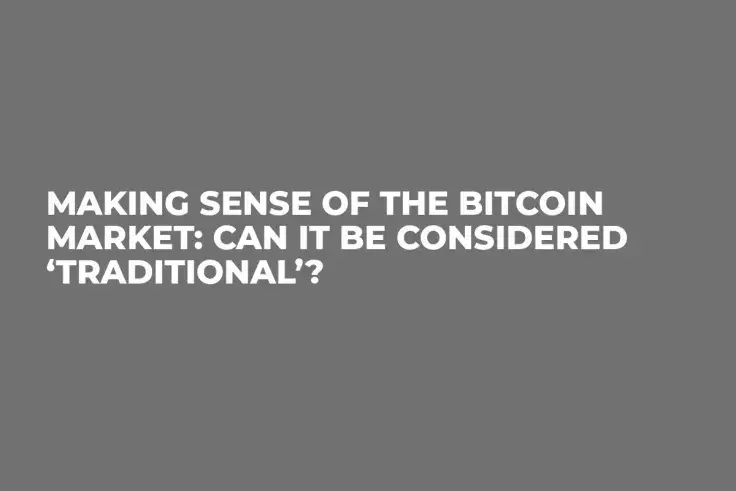
Bitcoin has always been seen as something very new and different, especially in terms of the investment space. It is an asset that has a market which is like nothing before seen. It has spiked in price massively, it has also dropped; it has incredible volatility and not much pattern to follow.
However, people have tried to pigeonhole it, they have tried to predict it and subjected it to traditional market tools and equations — often with very little success. In fact, there have even been a few attempts to see what kind of correlation can be found between the Bitcoin market and other traditional markets with the jury still being out.
However, there is research and studies that are suggesting the Bitcoin is indeed a much more traditional asset than first believed. If true, this would have a major impact on the trading and buying of Bitcoin as it is attempting to become a much more regulated and accessible asset.
An unlikely study
Strangely enough, researchers at the Institute of Nuclear Physics in Poland published a paper that claims the Bitcoin market follows many of the same numerical patterns that traditional markets have.
This led to Stanislaw Drozdz, one of the lead researchers on the paper and the Head of the Complex Systems Theory Department at the Institute of Nuclear Physics, explaining these findings a little more.
“Our research found that, as of March 2018, the Bitcoin market, through the steps of gradual self-adoption since its inception, is already obeying the same kind of price-fluctuation patterns as the world largest conventional markets like the S&P 500, currency exchange market, oil or gold,” Drozdz proclaimed.
Advertisement
“This refers to both, the magnitude of the relative changes of prices as well as to the temporal arrangement of those changes. Of course, this similarity is quantified in rigorous statistical terms.”
It is, of course, all quite scientific, and the finding is hard to decipher without some sort of mathematical Ph.D.; however, some of the evidence is pretty clear and understandable.
“The large drawdown that Bitcoin has experienced since December last year is also natural in global, mature markets — see oil in 2008 for example. Furthermore, Bitcoin has already started assuming a recovery trend,” Drozdz adds.
This similarity has not always been there, and a lot of it has to do with the maturing of the Bitcoin market. At first, according to the study, there were a lot of discrepancies between the traditional and Bitcoin markets, but as the latter has matured, so have those differences fallen away.
“There were differences in the first few years of Bitcoin trading but they gradually disappeared. When we first looked at the data, it didn’t actually look particularly promising. But on closer inspection, it became clear that the differences between the two were coming from the first two years of Bitcoin trading. Once the market had started to shape itself, those differences, as noted, started to disappear,” Drozdz said.
A settling in
With there being more instances of correlations being drawn between the Bitcoin market and others, as well as there studies like this one, suggesting the Bitcoin market is traditional in nature, it seems to be a positive thing.
If the Bitcoin market can mature to a point where it behaves in a predictable and understood manner, it makes it a lot easier for regulators to understand and get behind. As it is now, there are a lot of regulators who see the space as a “Wild West” as it is unpredictable and confusing, but being traditional changes all that.
 Dan Burgin
Dan Burgin Vladislav Sopov
Vladislav Sopov U.Today Editorial Team
U.Today Editorial Team